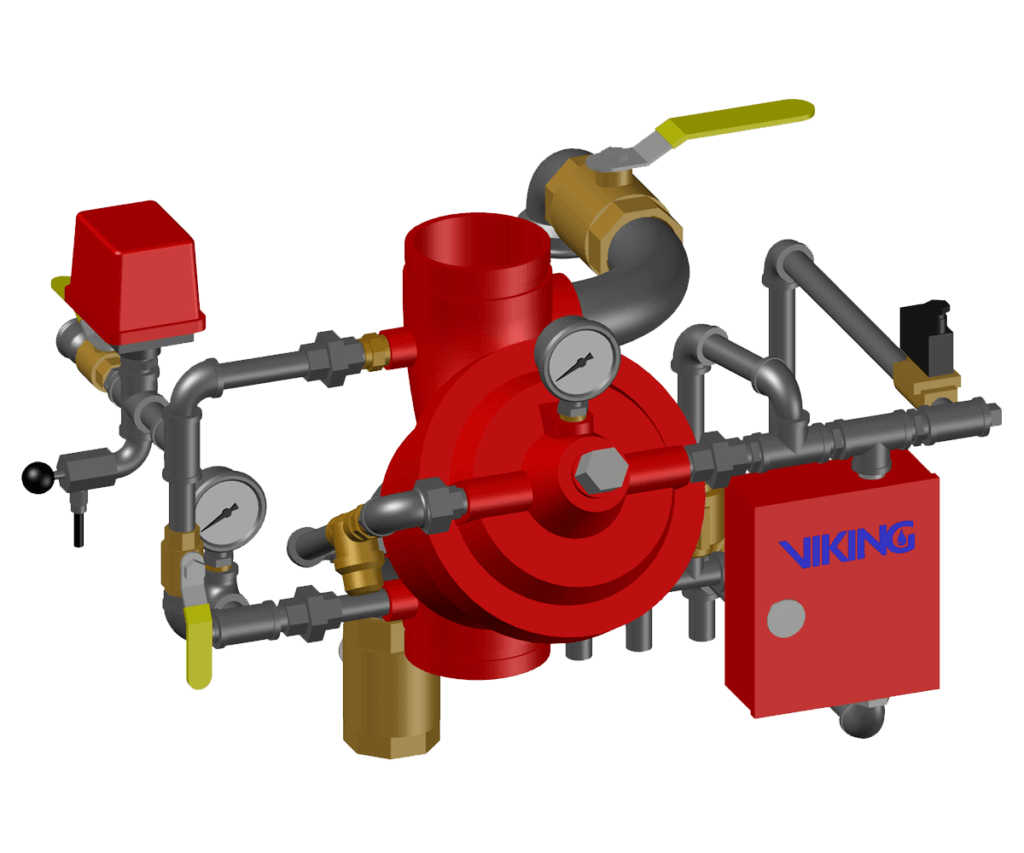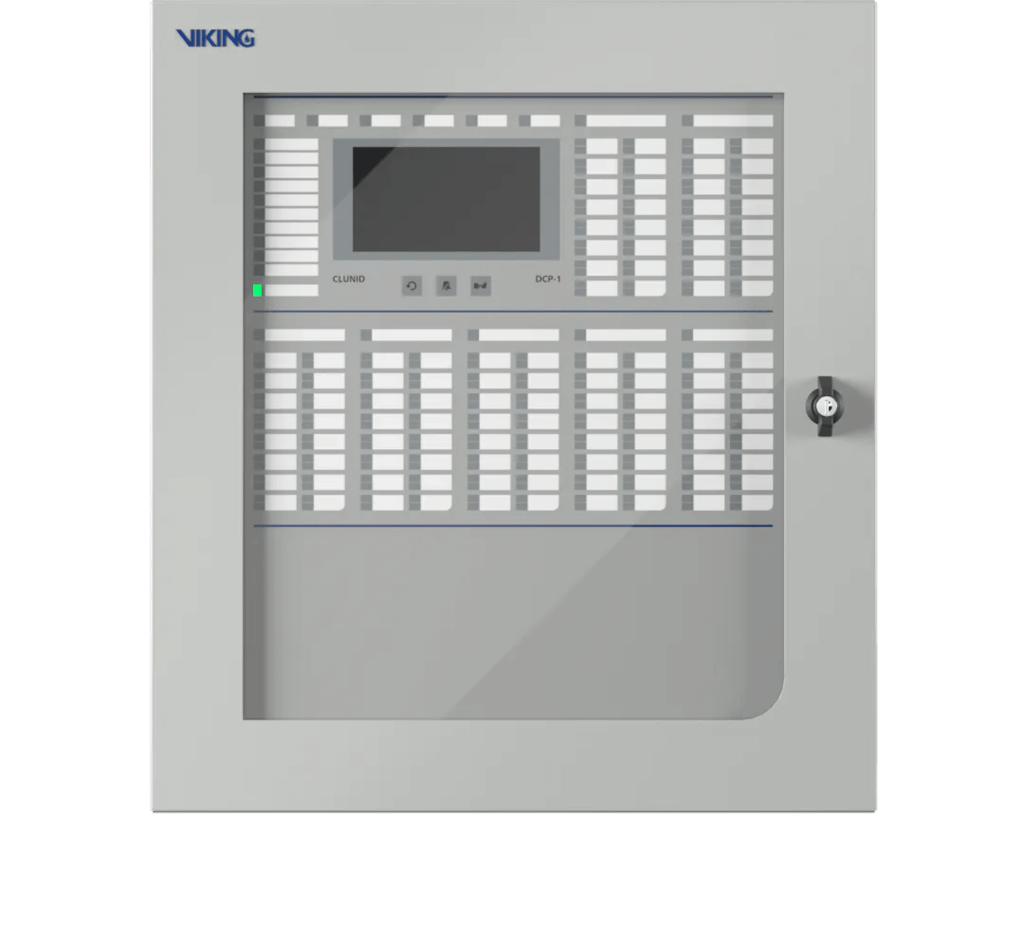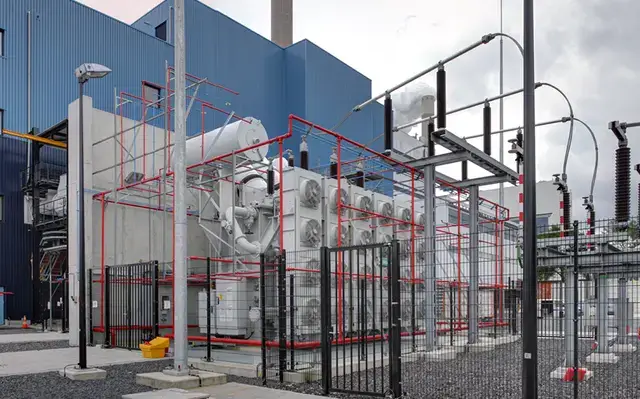Deluge systems – an essential line of defense
Fire is a powerful adversary that can wreak havoc on life, property, and the environment. In industrial and high-hazard facilities, the risk of a fast-growing and potentially very large fire is ever-present; consequently, the need for quick, effective fire protection systems is of paramount importance.
To prevent these risks, the deluge system stands out as a crucial line of defense. In the following, we will explore the fundamentals, components, applications, and advantages of deluge systems in fire protection.
Understanding the deluge system
Deluge systems are designed to quickly and efficiently suppress fires in high-risk areas or to protect structures from heat generated by nearby fires. Its primary objective is to rapidly flood an area with water to control or extinguish fires, making it highly suitable for environments where rapid fire spread is a significant concern.
In comparison to conventional sprinkler systems that use closed, heat-sensitive sprinkler heads, a deluge system uses open nozzles connected to a water supply that releases water upon the activation of a fire detection system or upon manual operation. In other words, when the system activates, water is discharged from all the nozzles at once – which is not what happens in a standard sprinkler system where each nozzle has to be heated up by the fire before it opens.
This combination of fast operation and open water nozzles results in a ‘deluge’ of water being applied over the area at risk which either controls the fire or cools an area being threatened by a fire.
Components of a deluge system
A typical deluge system consists of several key components:
- Deluge valves
- Nozzles
- Piping & fittings
- Fire detection system
Deluge valve
The deluge valve is the central control device that regulates the flow of water into the system. It remains closed under normal conditions but opens when a fire detection system or manual control signals the need for water discharge.
Deluge valves are equipped with a release system that can function manually, electrically (ER), pneumatically (PR), or hydraulically (HR), thus, allowing for flexibility in activation.
FSX-A ER deluge valve components

Legend
Nozzles
Unlike conventional sprinkler heads, deluge system nozzles are open and unobstructed until the system is activated. They are strategically positioned to ensure efficient coverage of the area to be protected. These type of nozzles are designed to release a high volume of water rapidly over a specified area, helping control a fire’s growth.
Piping & fittings
The piping network in a deluge system carries water from the source to the nozzles. The pipes and fittings are, thus, sized and designed to provide adequate water flow and pressure for effective fire suppression.
Fire detection system
The majority of deluge systems are controlled by fire detection systems constantly monitoring the area of concern and which activate when a fire is detected.
This detection system will then activate the deluge valve if a fire is detected through heat, smoke or other means. To reduce the risk of accidental discharge of water, the release of the valve can be configured to only occur under strict conditions. For example, both a detection alarm plus a manual push-button need to occur before water will flow.

Clunid DCP-1 fire detection and control panel
Applications
Deluge systems are compatible with applications in a variety of environments, especially where high-risk conditions exist. These may include:
- Power plants: Power generation facilities, especially those using flammable fuels such as transformers, where the coolant is often flammable, rely on deluge systems to safeguard critical equipment and infrastructure
- Aircraft hangars: Airports and military installations use deluge systems to protect aircraft and facilities where aviation fuel is present
- Chemical processing plants: Deluge systems are essential at chemical facilities to mitigate fires and chemical leaks.
- Warehouses: High-value commodities, including flammable materials, are protected with deluge systems at storage facilities and warehouses.
- Marine applications: Deluge systems are used on ships, including cargo ships and offshore drilling platforms, to provide fire protection in hazardous marine environments

Transformer (Credits: Huon/Nemweg)
Applications for the ‘cooling effect’
Some deluge systems are designed and installed to provide cooling, which protects equipment or a building in one area, should a fire occur nearby. Typically, these are in oil and gas facilities where a fire in one fuel storage vessel may generate enough heat to cause structural damage to neighboring tanks. In these situations, the deluge systems on those neighboring tanks would be activated to keep them cooled.
In many cases, water alone is not enough to combat fire and in worst case, may even serve to spread ‘liquid fire’. In areas of concern, foam concentrate may be automatically mixed into the water flow during system activation. This procedure starves the fire of oxygen to suppress it and in many cases even extinguish it. As the storage, proportioning and mixing of the foam concentrate is a complex process, only equipment and foam concentrate should be used that are approved in its combination. See Viking’s foam suppression systems for more information.
Interlocked deluge systems
Deluge systems are designed for rapid response, with the prompt opening of the deluge valve of paramount importance to ensure swift water discharge for fire control or extinguishment. The systems can be flexible in operation with many different modes of activation and can even be designed to close after the fire has been controlled – this can be done manually or automatically. This can be particularly desirable where water discharge must be minimized for environmental reasons or where water is not readily available.
As the release of a standard deluge system may discharge large amounts of water, it is understandable that some end-users want additional assurance that there really is a fire situation before opening the valve. In such cases, the system activation can be limited via so-called interlocks showing multiple indications of a fire. Examples for interlocks can be a system requiring two independent detection alarms or that in addition to a detection alarm, someone onsite visually confirms the fire and pushes a release button before water flow starts. Whilst interlocks do provide more security that there really is a fire, they can add delays in releasing the water, which could result in larger damage – a careful balance is required. Regardless of interlocks, it is recommended that all deluge systems should have a manual release at the valve – so even if the detection system fails, the valve can still be opened.
Conclusion
Deluge systems for fire protection present a vital safeguarding method in surroundings where rapid fire control or cooling is of utmost importance. Their fast activation, comprehensive coverage, and compatibility with high-hazard settings make them indispensable in the protection of life, property, and the environment. While deluge systems may be a significant investment, their proven effectiveness and reliability are well worth the cost. As we continue to advance in fire protection technology, deluge systems will remain a critical component in our fight against the destructive force of fire.
Image source: Shutterstock | Transformer by NUON/Hemweg | Viking S.A.

